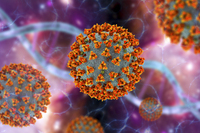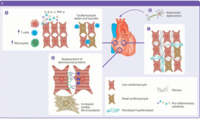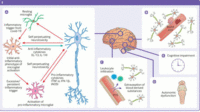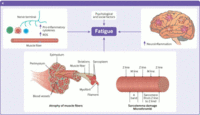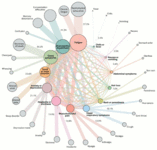Images and videos
Images
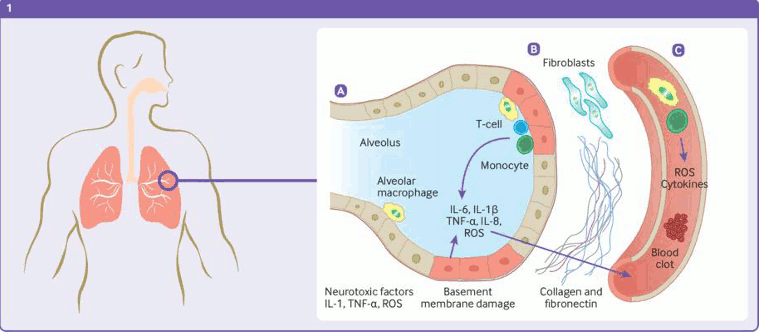
Long COVID
Long term sequelae of COVID-19. (1) In the alveoli of the lungs: (A) Chronic inflammation results in the sustained production of pro-inflammatory cytokines and reactive oxygen species (ROS) which are released into the surrounding tissue and bloodstream. (B) Endothelial damage triggers the activation of fibroblasts, which deposit collagen and fibronectin resulting in fibrotic changes. (C) Endothelial injury, complement activation, platelet activation, and platelet-leukocyte interactions, release of pro-inflammatory cytokines, disruption of normal coagulant pathways, and hypoxia may result in the development of a prolonged hyperinflammatory and hypercoagulable state, increasing the risk of thrombosis
BMJ 2021; 374: n1648; used with permission
See this image in context in the following section/s:
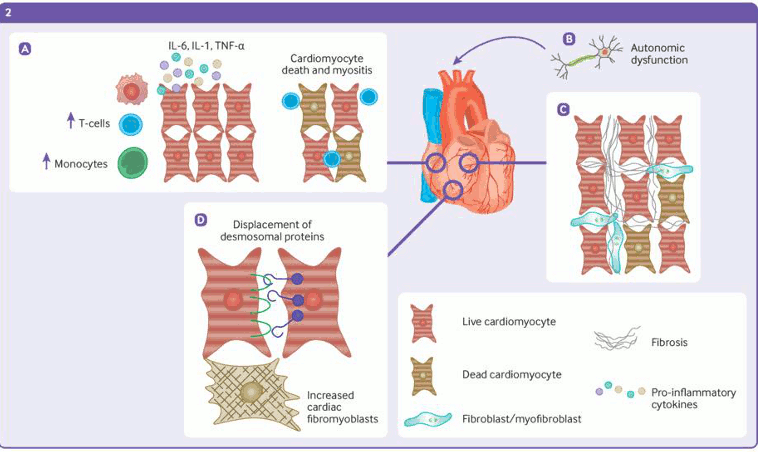
Long COVID
Long term sequelae of COVID-19. (2) In the heart: (A) chronic inflammation of cardiomyocytes can result in myositis and cause cardiomyocytes death. (B) Dysfunction of the afferent autonomic nervous system can cause complications such as postural orthostatic tachycardia syndrome. (C) Prolonged inflammation and cellular damage prompts fibroblasts to secrete extracellular matrix molecules and collagen, resulting in fibrosis. (D) Fibrotic changes are accompanied by an increase in cardiac fibromyoblasts, while damage to desmosomal proteins results in reduced cell-to-cell adhesion
BMJ 2021; 374: n1648; used with permission
See this image in context in the following section/s:
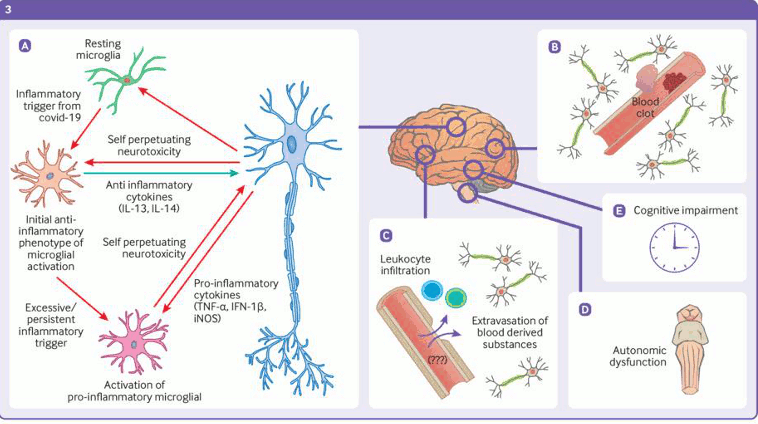
Long COVID
Long term sequelae of COVID-19. (3) In the central nervous system: (A) The long term immune response activates glial cells which chronically damage neurons. (B) Hyperinflammatory and hypercoagulable states lead to an increased risk of thrombotic events. (C) Blood-brain barrier damage and dysregulation results in pathological permeability, allowing blood derived substances and leukocytes to infiltrate the brain parenchyma. (D) Chronic inflammation in the brainstem may cause autonomic dysfunction. (E) The effects of long COVID in the brain can lead to cognitive impairment
BMJ 2021; 374: n1648; used with permission
See this image in context in the following section/s:

Long COVID
Long term sequelae of COVID-19. (4) Possible mechanisms causing post-COVID-19 fatigue. A range of central, peripheral, and psychological factors may cause chronic fatigue in long COVID. Chronic inflammation in the brain, as well as at the neuromuscular junctions, may result in long-term fatigue. In skeletal muscle, sarcolemma damage and fiber atrophy and damage may play a role in fatigue, as might a number of psychological and social factors
BMJ 2021; 374: n1648; used with permission
See this image in context in the following section/s:

Long COVID
Illustration of the ultrastructure of the SARS-CoV-2 coronavirus
Kateryna Kon/Science Photo Library; used with permission
See this image in context in the following section/s:
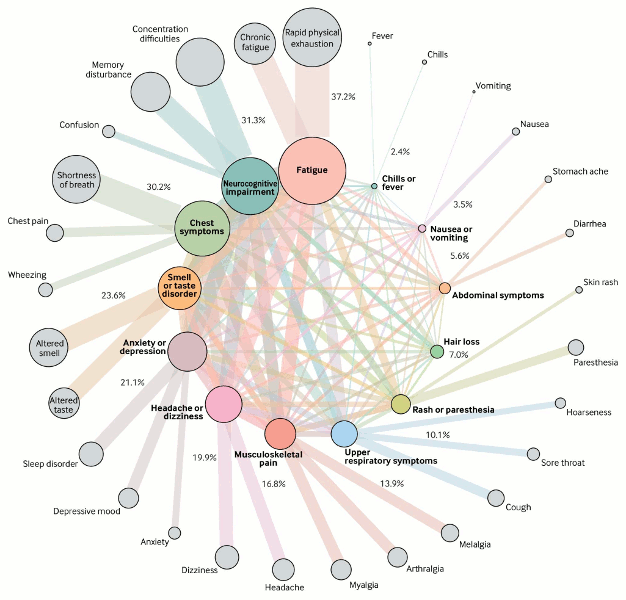
Long COVID
Co-occurrence network of symptom clusters 6-12 months after acute infection. Outer circles represent individual symptoms. Circle area represents proportion of patients with that symptom. These are linked to inner circles, which represent symptom clusters. Width of link lines again represents proportion of patients with that symptom. Circle area for clusters represents proportion of patients with at least one symptom from that cluster. Central links between symptom clusters represent co-occurrence of symptom clusters. Link width represents degree of co-occurrence. Based on data from 11,536 participants. Only symptoms not present before acute SARS-CoV-2 infection were considered
BMJ 2022 Oct 13:379:e071050; used with permission
See this image in context in the following section/s:
Use of this content is subject to our disclaimer
